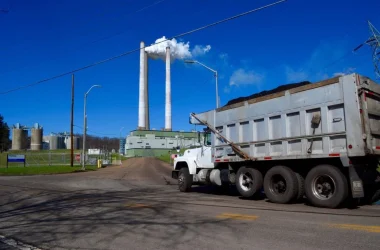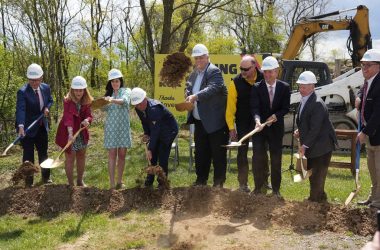WHEELING, W.Va. — A new report indicates fracking could help the United States recover up to 2.85 quadrillion cubic feet of natural gas, but another study shows the drilling technique may also produce carcinogenic radon gas across the Marcellus and Utica shale regions.
The American Gas Association’s new estimate of available natural gas in the nation reflects an increase of 161 trillion cubic feet from a similar 2012 evaluation. Cabot Oil and Gas reports 1 trillion cubic feet would be enough natural gas to power 24.3 million homes for an entire year.
“Every day, America’s natural gas utilities deliver energy solutions to more than 68 million residential, commercial and industrial natural gas customers,” AGA President and CEO Dave McCurdy said. “By enhancing safety and expanding service, we stand ready to deliver this abundant resource and support the nation’s economic, efficiency, environmental and security goals.”
However, the energy renaissance may come at a cost, according to a study released last week by the Johns Hopkins Bloomberg School of Public Health in Baltimore. Researchers there are making a correlation between elevated levels of radon in Pennsylvania to Marcellus shale fracking. They said 42 percent of radon readings inside Keystone State homes surpass levels the U.S. government considers safe.
“One plausible explanation for elevated radon levels in people’s homes is the development of thousands of unconventional natural gas wells in Pennsylvania over the past 10 years,” Bloomberg School professor Brian Schwartz said. “These findings worry us.”
Radon, an odorless radioactive gas, is considered the second-leading cause of lung cancer in the world after smoking, according to the Environmental Protection Agency. The National Academy of Sciences estimates 15,000-22,000 Americans die every year from radon-related lung cancer.
Fracking a single horizontal shale well requires millions of gallons of water, sand and chemicals, all of which are propelled into the earth at high pressure. Researchers at Johns Hopkins said this also releases radium-226, which decays into radon.
“By drilling 7,000 holes in the ground, the fracking industry may have changed the geology and created new pathways for radon to rise to the surface,” Joan A. Casey, a Robert Wood Johnson Foundation Health & Society Scholar at the University of California-Berkeley, said. “Now, there are a lot of potential ways that fracking may be distributing and spreading radon.”
Averaged over the whole study period, houses and other buildings in Pennsylvania using well water had a 21 percent higher concentration of radon than those using municipal water. Houses and buildings located in rural and suburban townships, where most of the gas wells are, had a 39 percent higher concentration of radon than those in cities, researchers said.
“I don’t think we can ignore these findings,” Schwartz said. “Our study can be improved by including information that was not available for our analysis, such as whether natural gas is used for heating and cooking, whether there is any radon remediation in the building, and general condition of the building foundation. But these next studies should be done because the number of drilled wells is continuing to increase and the possible problem identified by our study is not going away.”
To read more from The Intelligencer/Wheeling News-Register, subscribe here.





